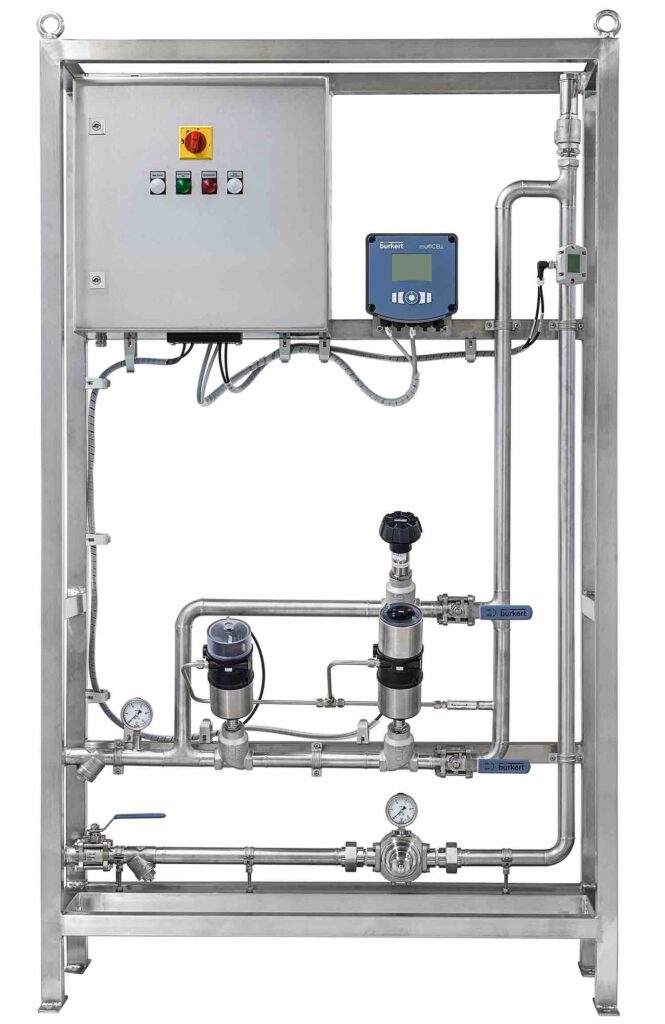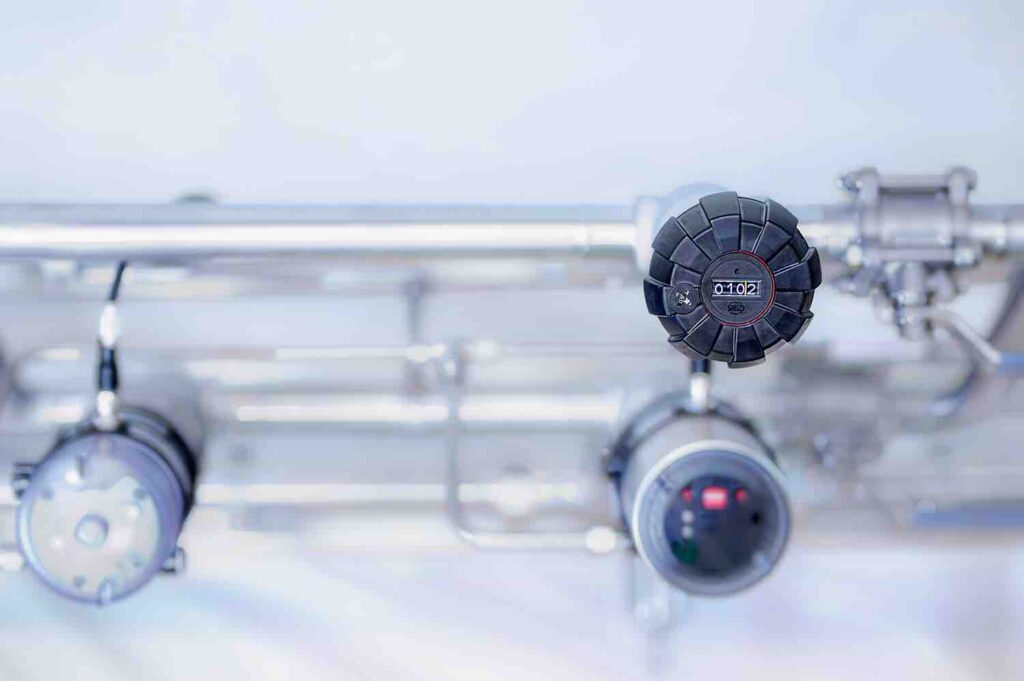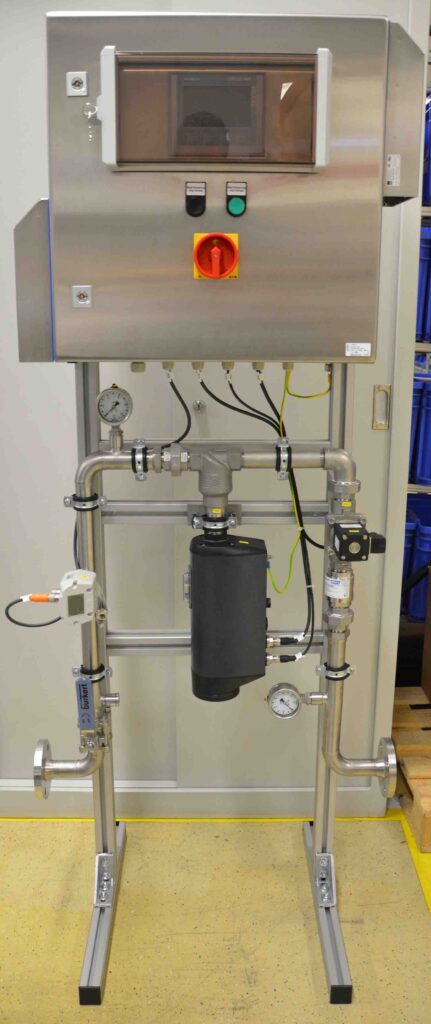From adding oxygen to the wort in a brewery, to introducing the chemical array in a clean in place (CIP) process, optimising dosing accuracy and repeatability is vital. To achieve these aims, a mass flow meter and control valve combination will increase process quality and efficiency. However, it’s also important to ensure optimal integration and specification within the process infrastructure to achieve the best performance and control across a water treatment application. Greg Wainhouse reports
Across all chemical or gas dosing requirements for water treatment processes, technology specification is vital for accurate measurement and control. Prior to selecting the flow metering and control hardware, the first step is to ensure that the pipework is optimised for the application. Process application engineers commonly oversize pipework with the goal of reducing pressure drops across the system, as well as offering the flexibility of upscaling capacity at a later date. However, oversized pipe diameters and inappropriate configurations can cause inaccuracies that impact the quality of the process as a whole.
Pipe diameter and low accuracy metering
Flow measurement of liquids and gases is essential for determining the volumes of additive that need to be dispensed; maintaining accurate flow readings is important for the whole process. However, an oversized pipe typically means low velocity flow, which generally causes inaccuracies in flow measurement, because it creates an uneven or transitional flow profile characteristic across the sensor.
This creates a fluctuating flow reading that causes a corresponding variable output, with a knock-on effect to additional equipment such as pumps and valves. In liquid flow applications, 1m/sec is generally the optimal ‘out of the box’ factory-calibrated flow velocity for most flow measuring technologies, because of its stable flow profile for reliable measurement. Even for entry-level budget devices right through to more complex advanced flow measuring technologies, manufacturers will usually state that accuracy is improved when measurement is taken at around 1m/sec.
For designers and engineers, this increase in velocity can often be achieved just by reducing the pipe diameter. Even a single standardised line size reduction can have a big impact on improving the accuracy of flow sensor measurement. However, if the existing line size is maintained, users risk velocities that are lower than the minimum capability of the measurement technology.
Oversizing the pipe will also increase the wear on a valve, particularly its seals, through the hunting effect. A fluctuating input means that the control valve opens and closes at a frequent and uncontrolled rate in an attempt to identify the correct position and maintain the target flow point. This can also impact pump operation, leading to a similar acceleration in lifetime wear, increasing costs in maintenance, hardware and through downtime.
The position of the flow meter within the system is also crucial to ensure accurate readings. Bends in pipework in close proximity to the sensor, as well as obstructions, such as additional components, can also cause turbulent, slow or uneven flow characteristics such as eddies. These factors can create the same challenges as an oversized pipe.
In gas applications, changes in velocities before the metering system will impact on the measurement stability. This will create an unstable flow profile that is not representative of factory-calibrated conditions.
Operators and commissioning engineers can often dampen a sensor’s output in an attempt to stabilise the control loop, but this is only masking the accuracy issue. The process will not be as accurate as designing and installing the optimal line size or location and these factors should be addressed at outset.
Modulating control for better accuracy
Adding a modulating control valve to the system can also help to increase dosing accuracy. Controlling pressure and/or flow, a control valve provides responsive control that improves the accuracy and repeatability of the process. It provides precise control trimming and can also regulate multiple channels from a single source.
Ideally, a control valve establishes a linear increase between the Kv value, the amount of flow at a given valve position with a pressure loss of 1 bar, to stroke opening. This control curve ratio changes based on the type of control valve used, as well as the position of the designed valve. The flow control partner will be able to specify the ideal technology, as well as assist in accurately sizing the valve, including calculation of the inlet and changing outlet pressures. Dynamic, multipoint performance data can help to specify an accurate and predictable valve, optimised for the application’s characteristics and requirements.
Improved control at lower cost
Increased application accuracy and repeatability will not only improve process performance and end-product quality, but it can also help to reduce process costs by optimising the volume of the chemical being dosed. Improvement in metering and control typically means using a lower volume of chemicals with no loss in quality.
In a recent example, a Bürkert customer involved in wastewater treatment had inadequate monitoring over sludge thickness that caused fluctuations in the polymers introduced for the dewatering process. This resulted in excessive chemical use and poor sludge thickness from the process. Introducing a mass flow meter and control valve could have enabled close correlation between sludge level and polymer dosing, reducing process costs in raw materials.
Reliable integration
While combining sizing techniques and technology specification can improve process optimisation, integrating the required technologies is also important to ensure reliability. An integrated flow control portfolio enables repeatable performance, communications compatibility and ultimately, ensures system uptime and throughput.
Greg Wainhouse is Industry Manager for Water Applications at Bürkert.
 Engineer News Network The ultimate online news and information resource for today’s engineer
Engineer News Network The ultimate online news and information resource for today’s engineer








